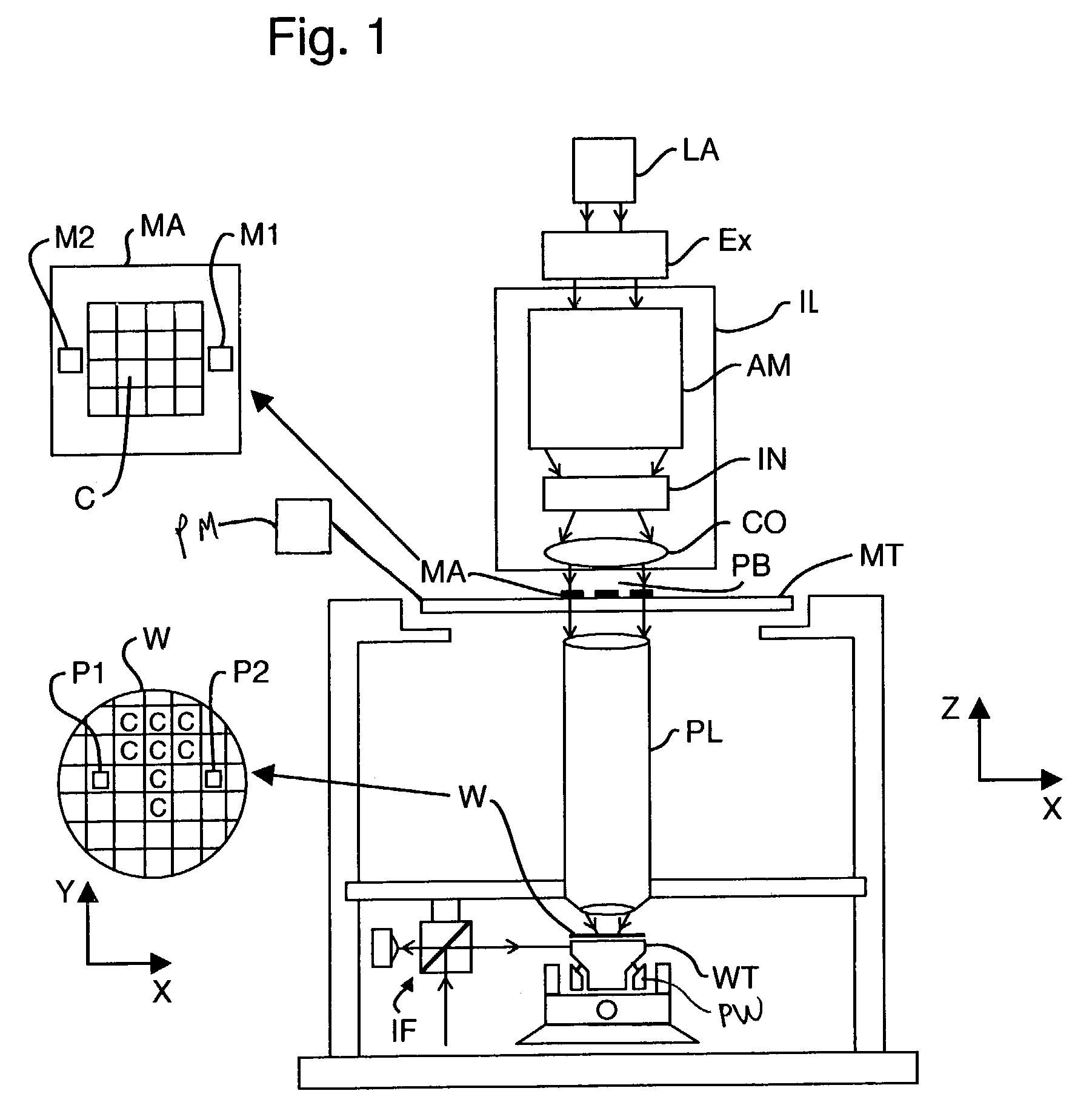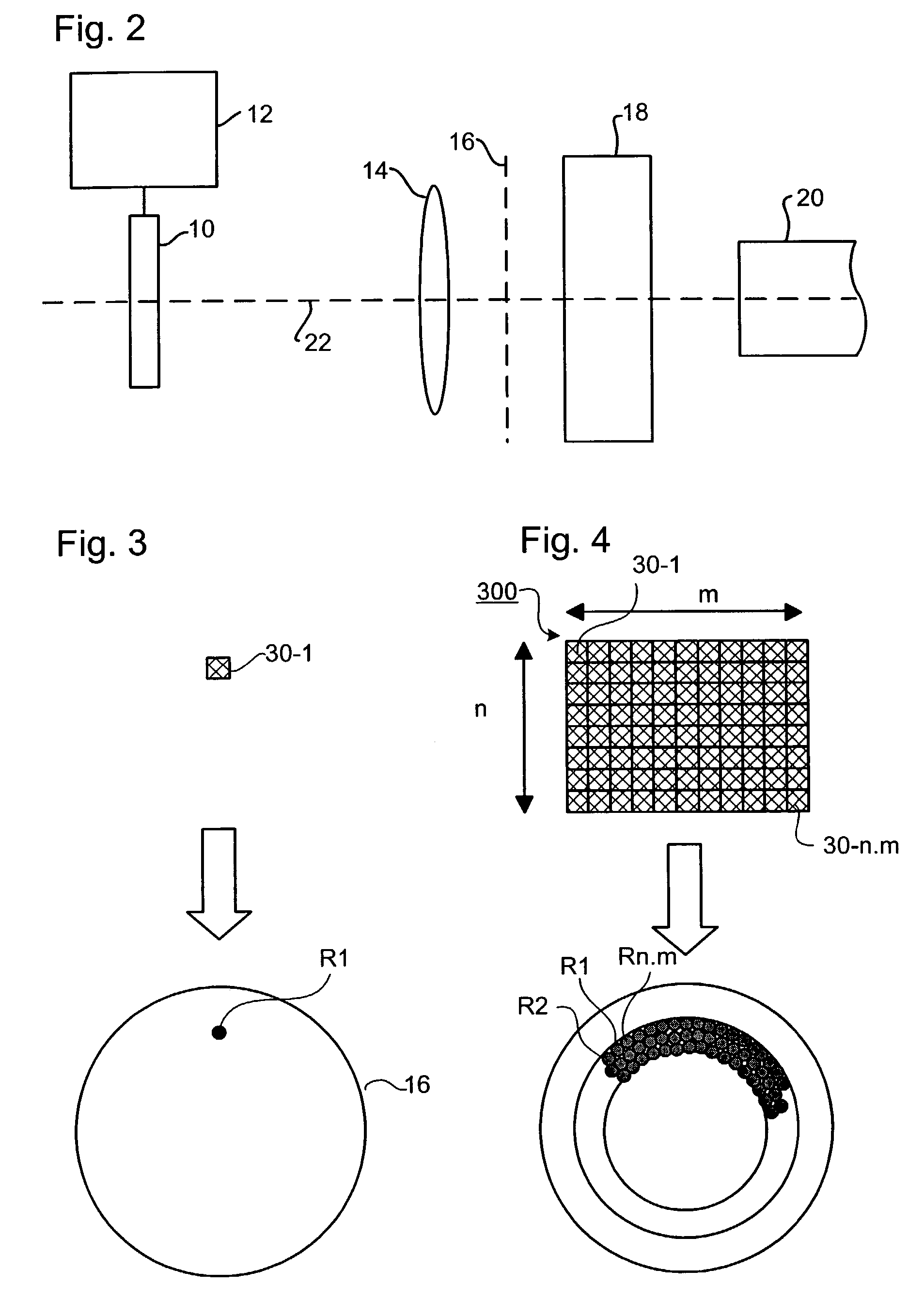Kit of parts for assembling an optical element, method of assembling an optical element, optical element, lithographic apparatus, and device manufacturing method
a technology of parts and components, applied in the field of parts and components for assembling an optical element, can solve the problems of increasing the cost of ownership, undesirable use of spatial filters, and increasing the throughput of the apparatus, and achieve the effect of quick and inexpensive assembly
- Summary
- Abstract
- Description
- Claims
- Application Information
AI Technical Summary
Benefits of technology
Problems solved by technology
Method used
Image
Examples
second embodiment
[0069]FIG. 8 illustrates an optical element 500 according to the invention. It is essentially the same as the optical element 300 but includes polarization changing components 50, such as for example half lambda plates, arranged in various orientations as desired to control the polarization of the illumination beam. According to their orientations, the polarization changing components 50 rotate the polarization state of a polarized projection beam PB, which may, for example, be generated by an excimer laser. Thus the relative intensities of different polarization states in the beam can be controlled, as can the distribution of polarization in the pupil, due to the combined action of the polarization changing components 50 and on top of them the optical components 30 which redirect the radiation. It may be appreciated that, although FIG. 8 shows an example of an optical element made of two layers of optical components, a third or fourth layer of optical components might be added to t...
third embodiment
[0077]In the third embodiment, the optical element 400 comprises a plate-like optical element 41 that directs incident radiation from the beam PB into a narrow range of angles. The plate-like element may be a diffractive, refractive, or diffusive optical element, e.g. a diffusor plate. On the output side an array of wedges 42-1 to 42-n.m are provided; these may also be placed on the input side if preferred. The wedges 42-1 to 42-n.m have differing wedge angles and so emit narrow cones of radiation 43-1, 43-2 at differing angles. The differing angles of the cones translate into different regions of the pupil plane 16.
[0078]The third embodiment may be advantageous as compared to the first in that wedges can be manufactured more cheaply than, for example, different diffractive optical components 30. The wedges can simply be placed on the plate-like element 41 and held in place by gravity or held between element 41 and a second plate-like element. The second plate-like element may have ...
PUM
| Property | Measurement | Unit |
|---|---|---|
| wavelength | aaaaa | aaaaa |
| wavelength | aaaaa | aaaaa |
| wavelength | aaaaa | aaaaa |
Abstract
Description
Claims
Application Information
 Login to View More
Login to View More - R&D
- Intellectual Property
- Life Sciences
- Materials
- Tech Scout
- Unparalleled Data Quality
- Higher Quality Content
- 60% Fewer Hallucinations
Browse by: Latest US Patents, China's latest patents, Technical Efficacy Thesaurus, Application Domain, Technology Topic, Popular Technical Reports.
© 2025 PatSnap. All rights reserved.Legal|Privacy policy|Modern Slavery Act Transparency Statement|Sitemap|About US| Contact US: help@patsnap.com



